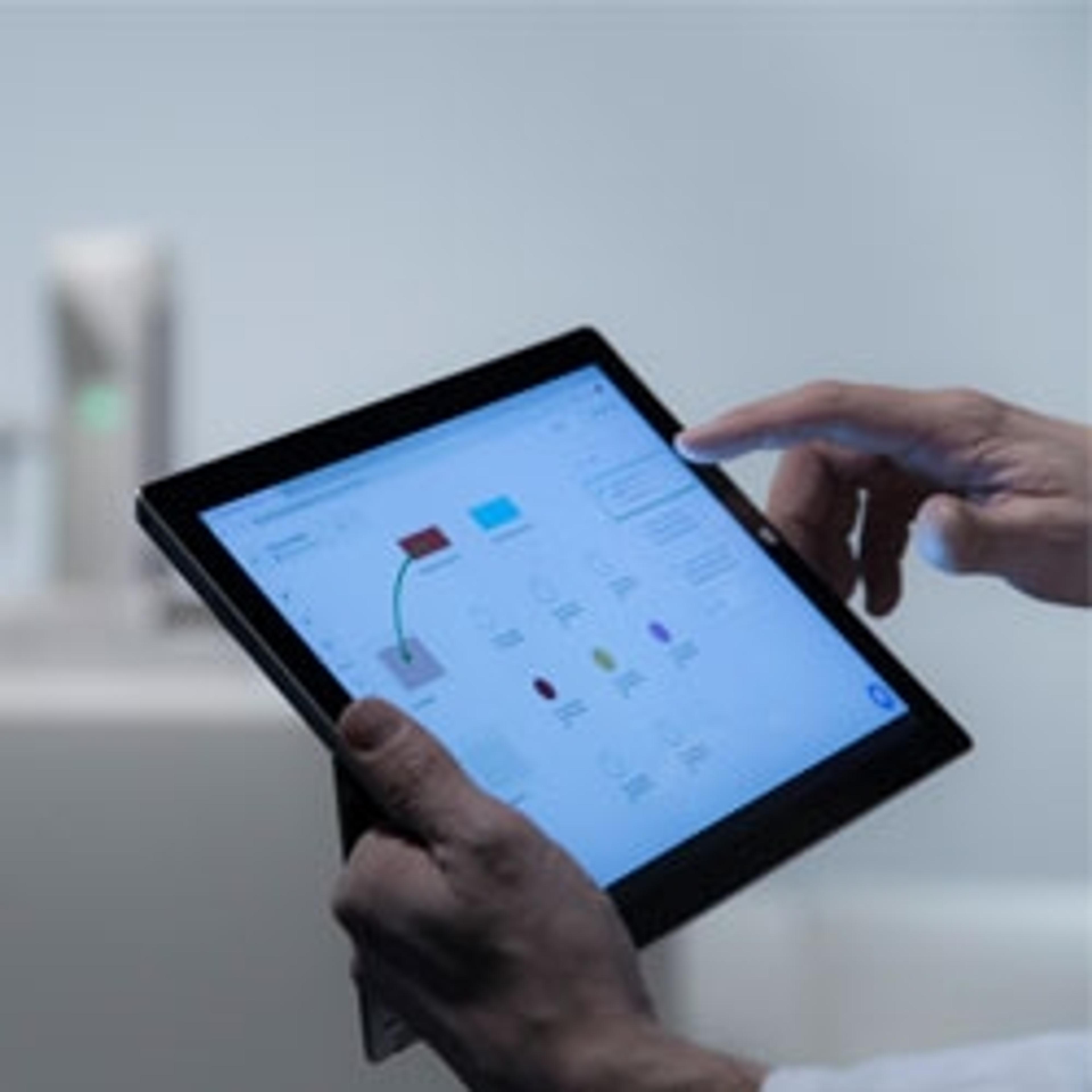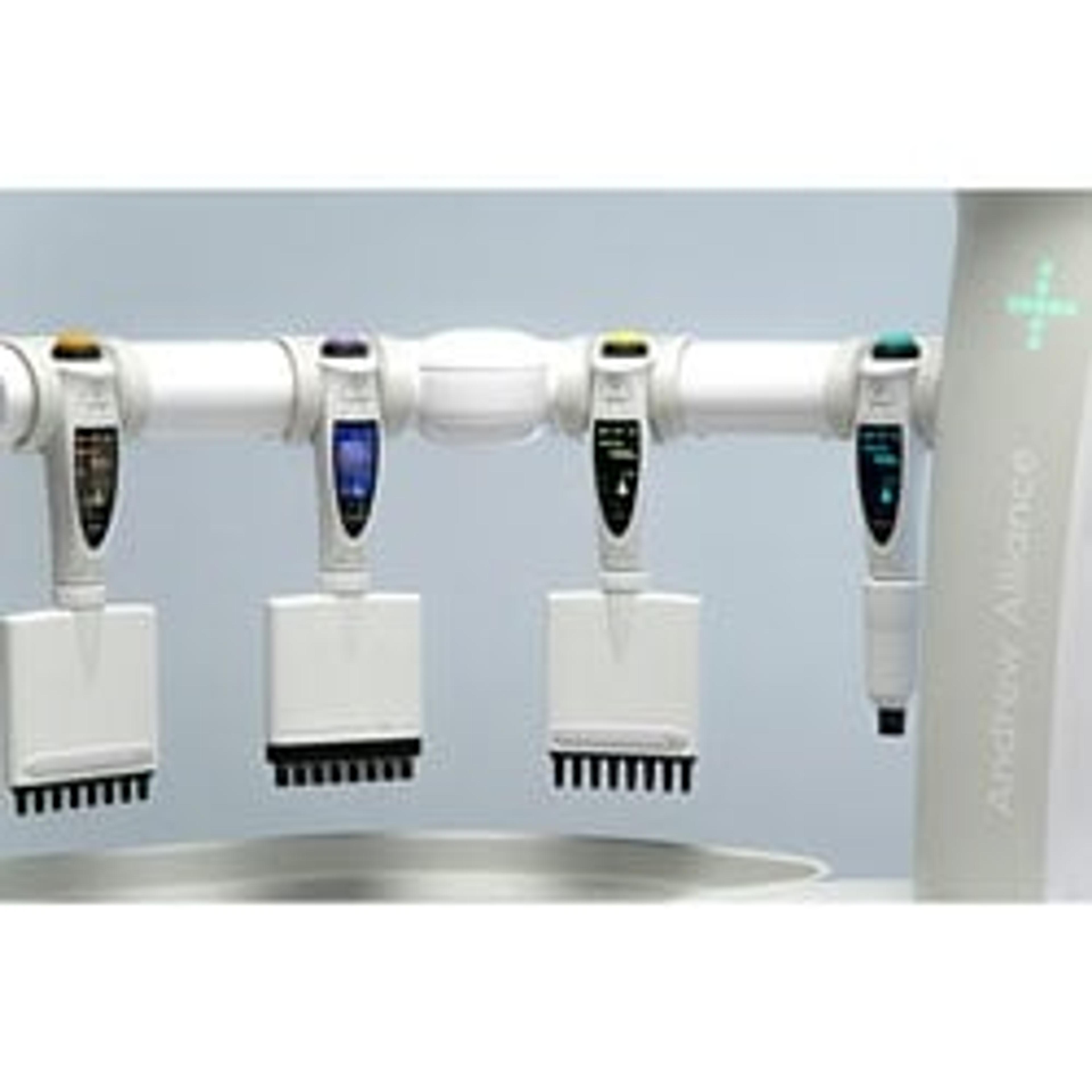Leveraging automation technologies to work smarter
Catch up on this virtual event to learn how to improve the efficiency and reproducibility of common protocols in your lab
7 Jun 2021

Are you interested in learning how to increase your laboratory efficiency, speed and reproducibility with simple-to-use and affordable automation solutions?
In this popular virtual event, now available on demand, watch three webinars from experts in the field of automation to discover how you can work smarter by:
- Using automated pipetting to increase accuracy, consistency and efficiency
- Leveraging automated sample preparation, liquid handling and cloud-native software to accelerate method development and de-risk method transfer
- Understanding compliance and sample traceability as part of the automated workflow
Register here to access all three presentations and read on for highlights of the Q&A from each session.
Session 1: Improving efficiency and reproducibility by automating common LC-MS sample preparation protocols – Watch on demand >>
Presented by Melvin Blaze and Kathryn Brennan, Waters Corporation
Q: How easy is it to edit the starting SPE methods and consumables in the OneLab software?
KB: It is very simple to edit a method. By just clicking it, it will bring you to the page where the whole method is written out in OneLab. You can explore the steps and make changes such as altering the volumes and mixing steps, as well as reusing pipettes or discarding them. For consumables, you can click on the consumable that's there and replace it with the consumable you would like to use.
Q: What do you have to do to switch out the deck if you want to use the robot to run multiple methods?
KB: It’s pretty simple to switch out. OneLab will show you what you need to set up a deck and the Dominoes can be easily moved and switched around for the deck that you need for a specific method.
Q: How do you add custom labware, for example, a specific reservoir plate?
MB: Most of the Dominoes and common labware that are used in laboratories are already a part of the Andrew Alliance OneLab platform. If there is something that is not included, you could probably connect with us and we could find a way to incorporate it into the workflows. To get specific information on the different dominoes that are available for the Andrew+ or OneLab platform, you can often reference the manual.
Q: Can a protocol be resumed if an error occurs during a run? What is the recovery procedure?
MB: There are different options. If something went wrong during the procedure which cannot be corrected, you can abort the experiment. There is also an option to pause the procedure when you're running the protocol.
Q: How many numbers of different concentrations does it take to prepare the standard calibration curve?
KB: You can do multiple concentrations, and there is a widget in OneLab for serial dilution where you can dilute a number of samples at different concentrations down very easily within the method. It's a very intuitive widget and it's very simple to use. You can do multiple different samples at multiple different concentrations for any standard curve preparation.
Session 2: Automating endotoxin testing using the Andrew+ Pipetting Robot – Watch on demand >>
Presented by Robert d’Ordine, Senior Scientist, Associates of Cape Cod, and Nigel Skinner, Waters Corporation
Q: What was the most difficult element encountered in the adaptation of the Pyrochrome assay to the Andrew+ system?
RO: There were a number of elements that were difficult. Obviously, the detection levels are picogram per milli-quantity, so you have to keep things very clean. One of the issues that were encountered is the nature of the reagent is a bit viscous. We had to work out the details between the repeat pipetting process versus the forward pipetting process, so testing for the different types of pipetting modes was required.
Q: How long does it take to build a plate with the Andrew+ system?
RO: Depending on how many samples and PPCs that you have to make, you can do it between 25 and 30 minutes, a little bit longer for a full plate.
Q: Does the pipetting robot provide sufficient mixing during standard curve preparation without the use of a vortex mixer in between steps?
RO: Yes, it does. If you manage the volumes and mixing correctly, the standard curves are consistent with those seen when you have everything in glass tubes and do full vortexing.
Q: Are there any plans to integrate the Andrew+ system directly with more peripheral devices like plate readers, pH meters, etc.?
NS: In principle, OneLab can be connected to anything that's got an additional port, which, of course, comes with the vast majority of the kits that you find in the lab these days. However, it takes time to feature those. So far, we've added a number of connected devices such as a connected Shaker+, connected Peltier+, connected Magnet+, and connected Vacuum+. This is an ongoing effort that is subject to the workflows that we're focusing our efforts on. But yes, at some point in the future, all of that is on the table.
Q: How do you perform the online protocols? Can you download the Andrew+ and just run it without any computer?
NS: With the OneLab software, you can use our online library and access a verified script. We have a number of applications that we've built for the Andrew+ where their scripts are available to users. For example, a user may want to do N-glycan analysis using GlycoWorks, amino acids analysis, or templates running serial dilutions, and so on. When it comes to doing your own protocol, typically the way that's working with the Andrew+ robot is you design the protocol, and you execute it on the robot either wirelessly or using an ethernet cable.
There are a number of ways that the software is available to the user. We have the cloud version for example, which is freely accessible online to anybody. But if you want to execute the protocol on the Andrew+ or on Pipette+, you need a license key to enable you to do that. But we also provide the software on the standalone server where the software is in the server and not on the cloud. This is self-contained and the user can operate it with the standalone server connected via their laptop. In terms of downloading the protocol to the robot, it's always going to be executed from the device using the OneLab software that is in turn connected either wirelessly or by an ethernet cable to the robot itself.
What is the impact of the OneLab 1.11 update?
NS: OneLab 1.11 released at the end of March and I think it's fair to say it has probably been the most important update for this state-of-the-art software environment since its launch back in February 2019. I think the most important thing here is that OneLab now comprises all the features required for regulatory compliance, satisfying both FDA 21 CFR part 11 and EU Annex 11. As such, it fulfills all GxP requirements without compromising the ease of use that the software is known for.
Additionally, you’re now able to lock a protocol to a specific version, preventing further editing. It's easy for a user to get a summary of the full version details and metadata associated with that. You can append a comment and document your work, so it facilitates collaboration with peers. You can view and easily retrieve archived content. We have additional scripts now in the OneLab Online Library, which if you haven't seen, I'd strongly encourage you to check out. And of course, new labware, and connected devices. We're constantly building the voice of our customers into OneLab’s offerings. We strive to provide the best possible experience for all our users.
Session 3: Follow that sample: The importance of compliance and traceability in the automated laboratory – Watch on demand >>
Presented by Heather Longden, Guillaume Mignard and Nigel Skinner, Waters Corporation
Q: I've seen companies describe their SaaS applications as coming pre-validated, is OneLab pre-validated too?
HL: It's absolutely true that with a SaaS solution there's a lot more of the testing that the vendor does. But at the end of the day, the regulated company is responsible to prove that that software is fit for their particular intended purpose and keeping a validation layer on top of what the vendor does is absolutely key. It's so important that the European regulators recently sent out a notification to look at companies using SaaS solutions for clinical work to make sure they know they are still responsible for the overall validation and specifically for the intended purpose.
Q: If we use the software as a service version of OneLab, how often are updates made?
NS: Major releases of OneLab, such as OneLab 1.11 for example, have a cadence of once every three months. Within that three-month period, we usually also have one or two minor releases. Those typically contain bug fixes, and also may contain additional labware that we've added into OneLab during that time for the benefit of our users.
Q: Can sample tracking be performed with OneLab on the Andrew+ robot?
NS: Yes, as of the OneLab 1.10 release in November of last year, OneLab now enables you to design a path followed by the sample during a sample prep experiment, from source to the final target labware. Additionally, if you provide a sample identifier such as a barcode number, which can be scanned using a barcode reader, or entered manually, the software will record it and let you export sample info at the end of the execution. It's a great addition.
SelectScience runs 10+ webinars a month across various scientific topics, discover more of our upcoming webinars>>


